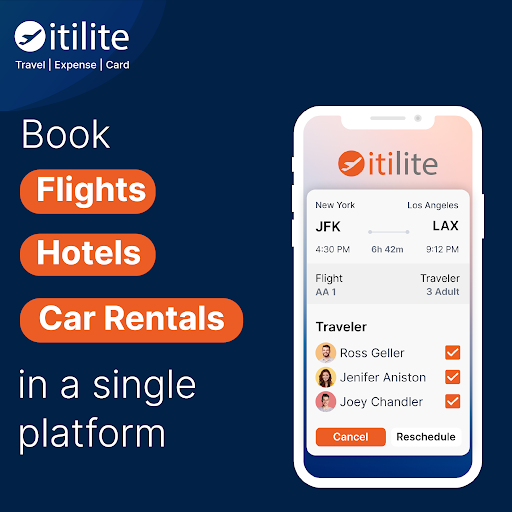
The past few years have been challenging for rental operations. Despite weathering an unparalleled supply crisis and reaping record profits, we’re beginning to glimpse the end of this prolonged struggle. However, we now face a new landscape filled with fresh challenges and evolving demands.
The car rental industry in the United States has entered a fiercely competitive phase. This shift results from companies heavily investing in technological advancements while expanding their online presence. The growing integration of information technology in vehicle rentals has notably driven customer usage of these services.
The surge in online bookings for tourist vehicles within the United States stems from increased travel, heightened tourism activities, and the widespread adoption of smartphones. Consequently, there’s an uptick in users aged 25 to 34 preferring online channels for vehicle rentals, benefiting the industry.
Anticipated growth in demand for convenient transportation is expected to propel the car rental sector in the United States. Additionally, introducing innovative service models is poised to revolutionize the industry’s landscape.
Significant Dynamics Reshaping the Car Rental Industry in the United States
Significant travel expenses are often associated with car rentals, a vital cog in the machinery of corporate travel. This insightful expense analysis of car rentals across the United States aims to unmask these daunting numbers and offer strategies to operate efficiently.
Revolutionizing Business Models
The car rental landscape in the United States is witnessing the emergence of innovative business models. For instance, the aggregator model bridges rental firms and individual car owners, streamlining the rental process while significantly reducing costs and risks. Compared to traditional rental models, this aggregator approach slashes capital expenditures and mitigates risk factors.
Surge in On-Airport Car Rentals to Propel Industry Growth
The surging tourism industry, particularly among air travelers for business and leisure, is the primary driver of car rental services in the United States. This heightened tourism translates to a greater demand for rental vehicles as they remain a preferred mode of transport for business and leisure travelers.
Since airports are typically situated outside urban areas, the demand for rental services to facilitate and analyse travel expenses skyrockets. Business travelers, in particular, opt for rental services due to the comfort and expedited commute they offer.
Rapid Adoption of Online Platforms Fueling Expansion
Expense analysis of car rentals has gained widespread popularity across the United States, primarily due to the convenience and accessibility offered by online booking platforms. Travelers favor these platforms for their seamless digital payment options, real-time tracking, and enhanced safety features.
The increasing number of smartphone users and broader internet access significantly impact the car rental sector. Daily commuters leverage online platforms to book shared rides for business trips or city commutes.
Expense Analysis Of Car Rentals
Outlined below are the projected Compound Annual Growth Rates (CAGR) for vital segments encompassing car types, usage scenarios, and booking methods:
- The economy car segment is anticipated to spearhead the industry, showcasing a robust 4.5% CAGR through 2034.
- On-airport rentals will witness a substantial 5.8% CAGR from 2024 to 2034.
- Within the booking mode category, mobile applications are expected to flourish at an impressive 6.9% CAGR, extending until 2034.
Decoding Expenses: Unraveling the Car Rental Cost Matrix
When you think about traveling for work, the ability to analyse travel expenses and balance comfort and convenience against costs becomes critical. For instance, understanding why car rental expenses vary drastically from coast to coast can help businesses manage their travel budgets better.
East Coast Vs. West Coast
Major business hubs on the East Coast, like New York and Boston, are notorious for dense traffic and costly parking, making car rental costs significantly steeper. Conversely, West Coast cities like Los Angeles and San Francisco may offer lower rental rates, but they aren’t without their fair share of expenses.
A Look at Midwest and Southern States
Car rental costs drop somewhat in the Midwest and Southern regions. However, bustling cities like Chicago and Dallas still command higher rates. Businesses must consider such nuances to analyse travel expenses effectively.
Timing and Location Considerations for Rental Expense Analysis
Gaining an edge in car rental expense management requires understanding the nuances of timing and location.
The Impact of Seasons
Demand surges during holidays and peak seasons, and car rental rates follow suit. These periodic cost spikes must be factored into any comprehensive expense analysis.
Airport vs. City Center Rentals
Renting from a city center location often yields significant savings compared to convenient but pricier airport rentals. A short taxi or rideshare trip from the airport to the city could offset steep rental costs.
Harnessing Tech for Efficient Expense Management
Sophisticated technology tools offer streamlined solutions to manage and do analysis of travel expenses effectively.
Utilizing Car Rental Apps
Car rental apps allow for easy comparison and booking, providing visibility and control over rental expenses. Companies can streamline the car rental process by choosing the right app and saving on costs.
Expense Management Solutions
Proactive expense analysis often involves leveraging software solutions. Platforms like itilite will provide real-time tracking and detailed expense reports to help businesses highlight patterns, identify key expense areas, and uncover cost-saving opportunities.
Navigating the Highway of Car Rental Costs with Itilite
Taking a bird’s eye view of car rental expenses across the US, it is clear that a robust strategy to analyse travel expenses and identify cost-saving opportunities is not just beneficial—it’s essential.
From understanding regional variations to leveraging technology for better expense management, businesses have numerous strategies. In the US corporate travel industry’s fast-paced and complex landscape, standing out requires innovative solutions like itilite, a unified business travel and expense platform. Itilite mitigates the complexities associated with corporate travel management by providing a seamless, tech-driven solution for a comprehensive expense analysis. With real-time tracking, detailed reporting, and a user-friendly interface, itilite is helping businesses navigate the highways of corporate travel with confidence and cost efficiency.
With the right tools and knowledge, you can effectively manage your organization’s travel expenses and unlock new opportunities for growth and success in the corporate travel landscape.
Book a 30-minute demo call to delve into the details.













